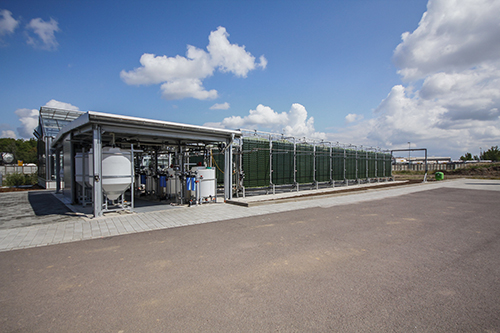Objective and background
The aim of the project is to provide Phaeodactylum-tricornutum biomass as a raw material source for food production. It contains up to 5 percent (w/w) EPA, but also carotenoids or ß-glucans, and up to 50 percent proteins. All these ingredients are to be used as components or substitutes of food with additional functions as part of the Baden-Württemberg Bioeconomy research programme.
 Fraunhofer Institute for Interfacial Engineering and Biotechnology IGB
Fraunhofer Institute for Interfacial Engineering and Biotechnology IGB